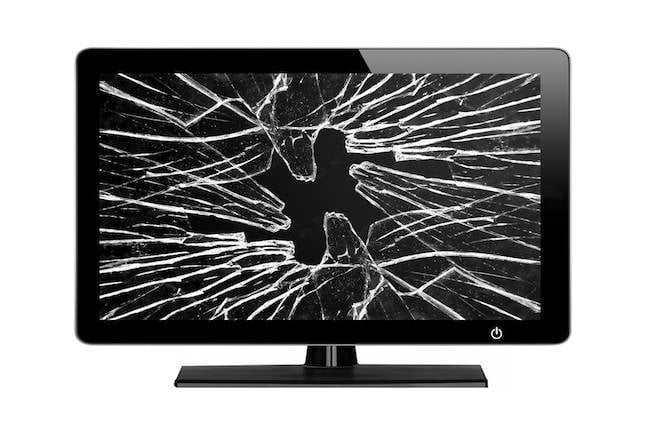Hisense QLED TVs Are Just LED TVs, Lawsuit Claims

Hisense USA has been sued for advertising televisions with quantum dot technology that allegedly lack quantum dot technology.
It's as if the Schrödinger's cat experiment were transposed to a courtroom, where the quantum dot is both there and not there.
At between around 2 and 10 nanometres in diameter, quantum dots are made of a semiconductor material, such as cadmium selenide or indium phosphide. Being particularly small, their size and shape dictate the color of light they emit when powered, the result of the quantum behavior of their electrons.
Sony Bravia televisions adopted the technology back in 2013. According to a 2017 research paper [PDF] on quantum dot displays, "QD-enhanced LCD appears 1.26x more efficient than organic light-emitting diode (OLED) display due to its wider color gamut."
Hisense, the US subsidiary of Qingdao, China-based Hisense Group, makes a variety of flat screen televisions that purportedly feature QLED Quantum Dot color technology.
"QLED Quantum Dot Technology, significantly broadens the range of color you perceive to create over a billion individual shades," the company's blurb for its 43" QD5 Series explains. "So, you can soak up every wave of the Caribbean Sea and every brushstroke of the desert sunset."
Yet according to an aspiring class-action complaint [PDF] filed earlier this week in the Southern District of New York on behalf of plaintiff Robert Macioce, the amount of QLED tech or QD is nonexistent or imperceptible in Hisense TVs.
- Three charged in Singapore in case linked to illicit shipments of Nvidia GPUs to China
- How mega city council's failure to act on Oracle rollout crashed its financial controls
- Two arrested after pensioner scammed out of six-figure crypto nest egg
- Tesla's Autopilot false advertising tussle with California DMV must go to trial
The complaint points out, fairly enough, that in order to be considered a QLED television, the device must actually include quantum dot technology such that it represents an improvement over LED technology.
"Any television that fails to include quantum dot technology (or includes only a negligible amount of the technology such that it fails to provide a meaningful improvement in performance) is not a QLED or QD television – and is only an LED television," the complaint says.
That would be various models that Hisense has sold since 2017, including the QD5, the QD6, the QD65, the QD7, the U7, and the U7N series models of television, the complaint contends.
"[U]pon information and belief, none of these television models contain QLED or QD technology, or the QLED or QD technology is negligible such that the QLED technology fails to provide a meaningful improvement in performance or the advertised benefits," the court filing asserts.
Such claims amount to false advertising, it's argued, because they mislead consumers and induce them to purchase televisions they'd otherwise not have purchased. And the manufacturer's alleged misstatements about its television technology allows it to sell "a lesser-quality product at a higher price" and "to realize a profit it may not have otherwise made if it were truthful regarding the performance capabilities of its televisions."
The presence of QLED technology cannot be easily ascertained by consumers, the complaint says, even as it asserts that the chemical process used to produce quantum dots leaves chemical markers that make it simple to verify the presence or absence of QLED tech.
There's no indication in the complaint that any such test has been applied to Hisense TVs. And the attorney for the plaintiff did not immediately respond to a request to explain how the alleged absence of QLED technology had been determined.
Hisense did not respond to a request for comment. ®
From Chip War To Cloud War: The Next Frontier In Global Tech Competition
The global chip war, characterized by intense competition among nations and corporations for supremacy in semiconductor ... Read more
The High Stakes Of Tech Regulation: Security Risks And Market Dynamics
The influence of tech giants in the global economy continues to grow, raising crucial questions about how to balance sec... Read more
The Tyranny Of Instagram Interiors: Why It's Time To Break Free From Algorithm-Driven Aesthetics
Instagram has become a dominant force in shaping interior design trends, offering a seemingly endless stream of inspirat... Read more
The Data Crunch In AI: Strategies For Sustainability
Exploring solutions to the imminent exhaustion of internet data for AI training.As the artificial intelligence (AI) indu... Read more
Google Abandons Four-Year Effort To Remove Cookies From Chrome Browser
After four years of dedicated effort, Google has decided to abandon its plan to remove third-party cookies from its Chro... Read more
LinkedIn Embraces AI And Gamification To Drive User Engagement And Revenue
In an effort to tackle slowing revenue growth and enhance user engagement, LinkedIn is turning to artificial intelligenc... Read more

